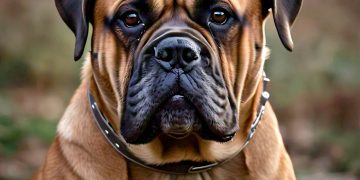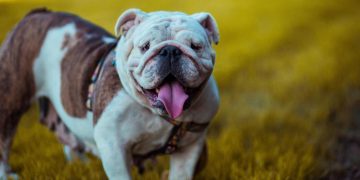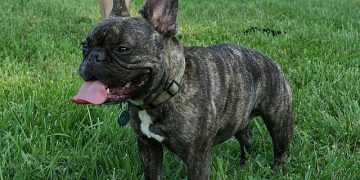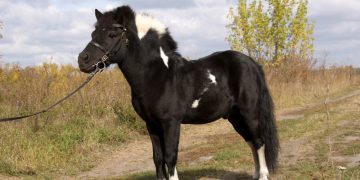A female dog’s heat cycle, also known as estrus, is a natural reproductive process that occurs periodically throughout her life. If you’re a dog owner, it’s important to understand the timing, symptoms, and best care practices during this phase.
In this guide, we’ll cover:




1. Understanding the Canine Heat Cycle
Unlike humans, female dogs experience estrus cycles instead of menstrual cycles. These cycles begin at 6-12 months of age, depending on the breed, and continue throughout a dog’s life.
 How Often Do Dogs Go Into Heat?
How Often Do Dogs Go Into Heat?
- Most female dogs go into heat twice a year (every 6-8 months).
- Small breeds may cycle 3-4 times a year.
- Large breeds may cycle once every 12 months.
- Heat cycles last 2-4 weeks on average.
 Can a Dog Get Pregnant While in Heat?
Can a Dog Get Pregnant While in Heat?
Yes! A female dog is fertile during the heat cycle, and mating during this time can lead to pregnancy.
2. The Four Stages of the Dog Heat Cycle
 Stage 1: Proestrus (Preparation for Mating) – 7-10 Days
Stage 1: Proestrus (Preparation for Mating) – 7-10 Days
This is the beginning of the heat cycle, where the dog’s body prepares for ovulation.

- Swollen vulva.
- Bloody vaginal discharge.
- Increased urination.
- Behavioral changes: More clingy or irritable.
- Male dogs will show interest, but the female is not yet receptive to mating.




 Stage 2: Estrus (Fertile Period) – 5-14 Days
Stage 2: Estrus (Fertile Period) – 5-14 Days
This is the peak fertility phase where the female is receptive to mating.

- Lightened discharge (pink or straw-colored).
- Swollen vulva remains.
- Flirtatious behavior (tail flagging, presenting to males).
- Increased restlessness.




 Stage 3: Diestrus (End of Fertility) – 60-90 Days
Stage 3: Diestrus (End of Fertility) – 60-90 Days
This is the cool-down period where the female is no longer fertile.

- Swelling decreases.
- No more discharge.
- Behavior returns to normal.
- If pregnant, gestation lasts ~63 days.



 Stage 4: Anestrus (Resting Phase) – 3-6 Months
Stage 4: Anestrus (Resting Phase) – 3-6 Months
This is the inactive phase between heat cycles.



3. How to Tell If Your Dog Is in Heat
 Physical Symptoms:
Physical Symptoms:




 Behavioral Symptoms:
Behavioral Symptoms:





4. How to Care for a Dog in Heat


- Never leave her outside alone. Male dogs can jump fences or dig under gates to reach her.
- Walk her on a short, controlled leash—avoid off-leash areas.


- Use dog heat diapers or washable pads to protect furniture and flooring.
- Regularly clean her genital area to prevent infections.


- Some dogs become needy—give extra cuddles.
- Others become irritable—respect their space.


- Keep her separated from male dogs in the household.
- Be extra cautious if she lives with intact males.


- Wash bedding frequently.
- Wipe her vulva with a gentle, fragrance-free cloth to keep her clean.
5. Preventing Unwanted Pregnancy: Should You Spay Your Dog?
 Benefits of Spaying (Ovariohysterectomy):
Benefits of Spaying (Ovariohysterectomy):




 When to Spay?
When to Spay?
- The best time is before the first or second heat cycle (around 6-12 months).
- However, older dogs can still be safely spayed.
 Alternatives:
Alternatives:
If you don’t want to spay, carefully manage her heat cycles and prevent unwanted mating.
6. Common Myths About Dogs in Heat
 Myth 1: A Dog Should Have One Litter Before Being Spayed
Myth 1: A Dog Should Have One Litter Before Being Spayed

 Myth 2: Male Dogs in Heat Also Bleed
Myth 2: Male Dogs in Heat Also Bleed

 Myth 3: Dogs in Heat Are in Pain
Myth 3: Dogs in Heat Are in Pain

 Myth 4: A Dog in Heat Cannot Get Pregnant on Her First Cycle
Myth 4: A Dog in Heat Cannot Get Pregnant on Her First Cycle

Final Thoughts: Keeping Your Dog Healthy During Heat
Understanding dogs in heat is essential for responsible pet care.




By staying informed and prepared, you can help your dog stay comfortable and safe during estrus!

























